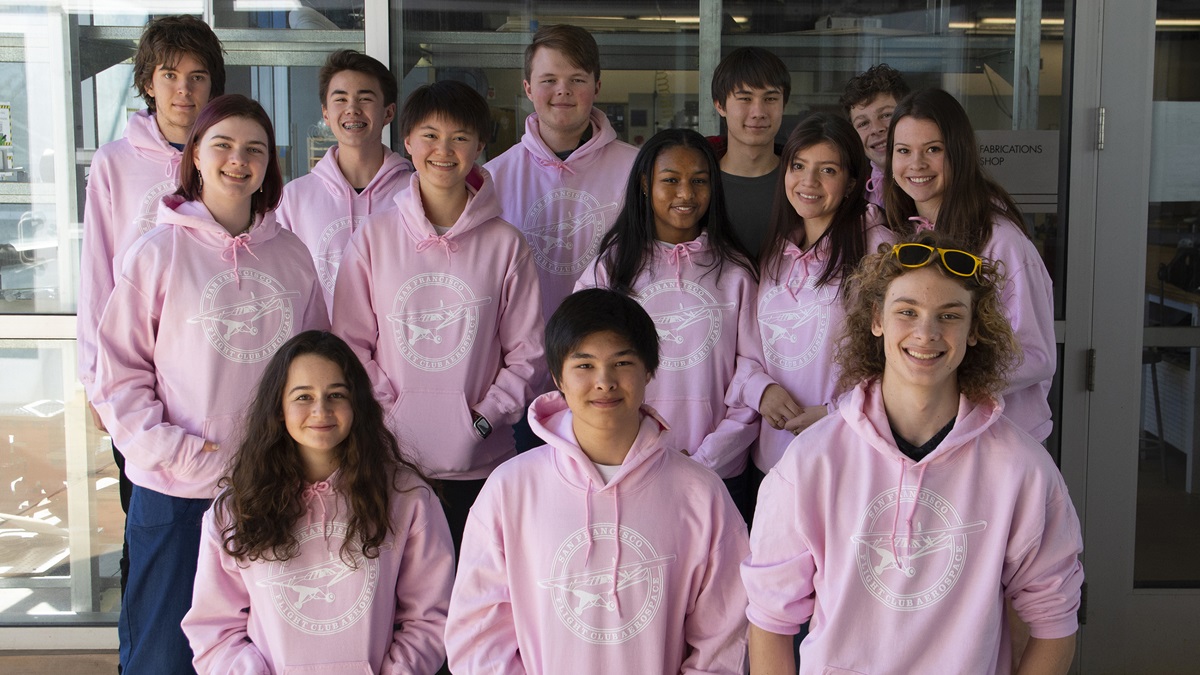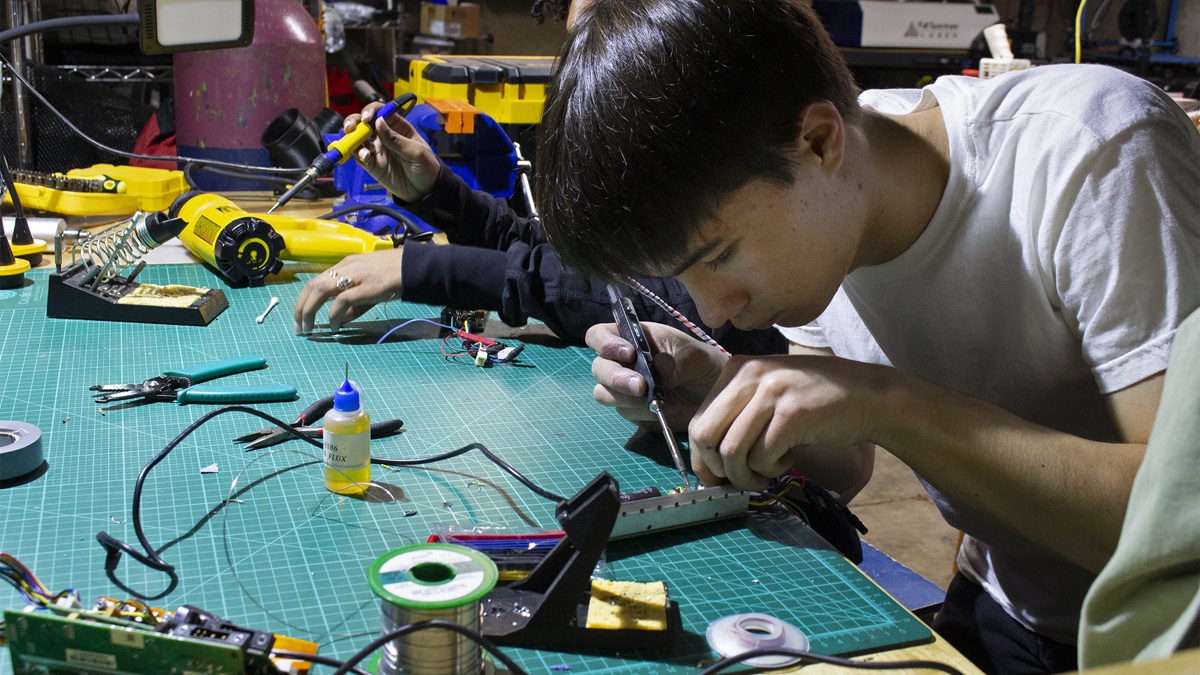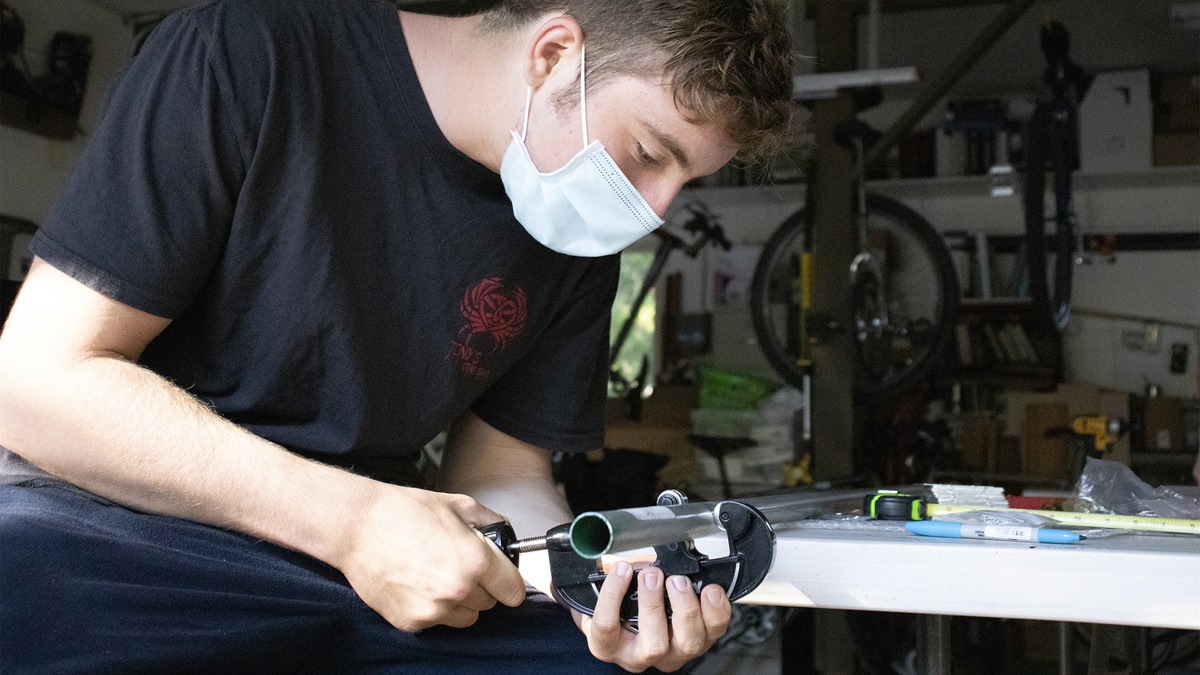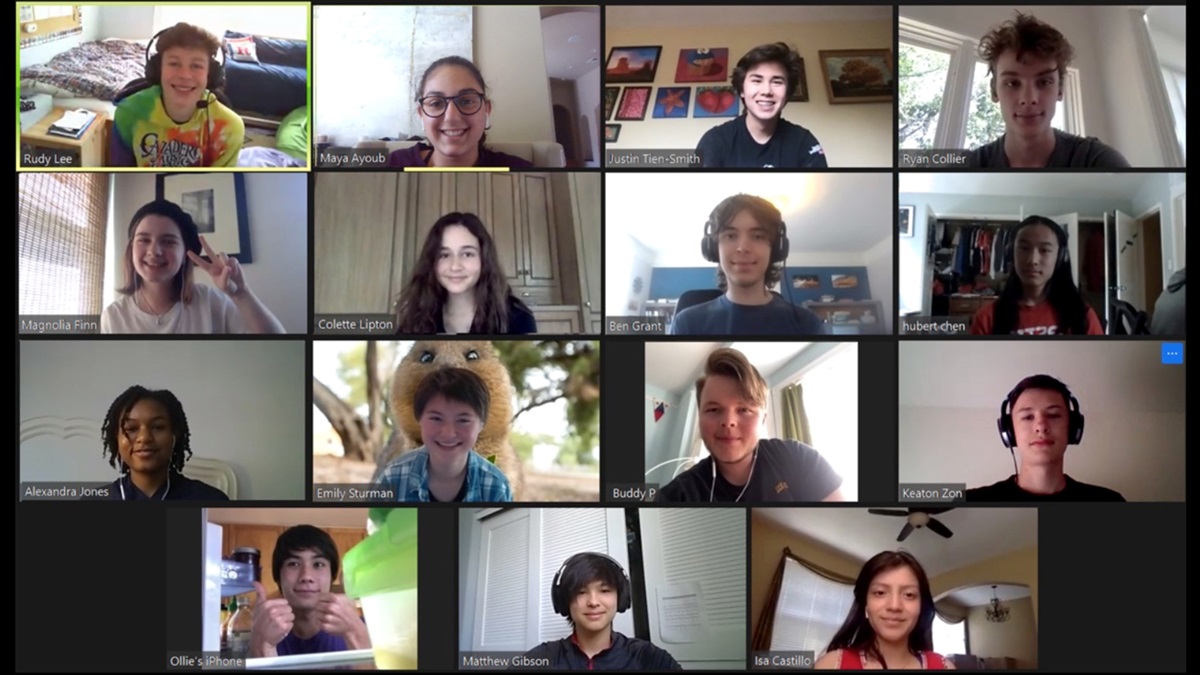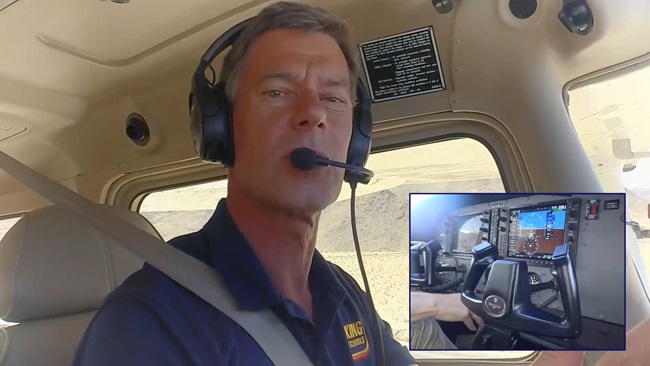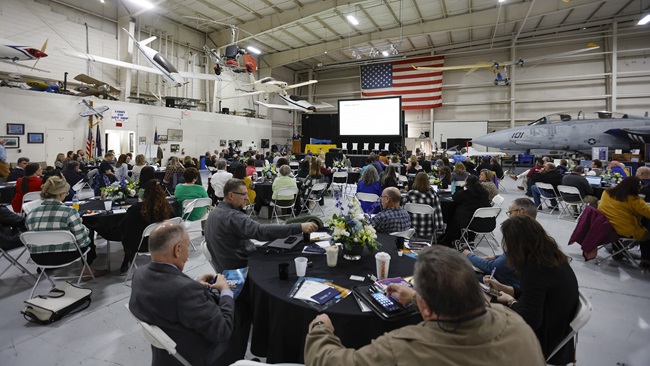California students building electric ultralight from scratch
Flight Club Aerospace empowers youth to pursue aviation passion
High school students in the San Francisco Bay Area are brainstorming, building, and learning to fly an electric-powered ultralight aircraft through Flight Club Aerospace.
The student-led initiative empowers the group of teens from various Bay Area high schools to learn effective management skills while engineering and constructing a flyable Part 103 aircraft completely from scratch with a spotlight on new technology and safety. Key parts of the plan include a marketing team, an outreach team, and sponsors—but one element the team isn’t relying on is a faculty representative.
Lee said he’s an “engineer and a product designer at heart,” and he helped found the club to strike the balance between “total professionalism and just being goofballs. For me, personally, I’m more into mechanical engineering, but aerospace combines so many different forms of engineering.”
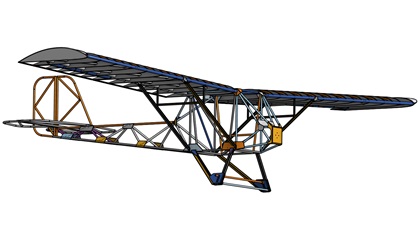 The club’s single-seat, under 254-pound ultralight design (without pilot or fuel) stalls at less than 24 knots and has a maximum cruise speed of 55 knots. “The whole idea behind it is this doesn’t have to be regulated, and you don’t need a pilot license, but for safety purposes, everyone who flies will get a pilot certificate first,” Lee confided. “Flight Club has become so much more than just building a plane. It’s become an education, a curriculum, and a community.”
The club’s single-seat, under 254-pound ultralight design (without pilot or fuel) stalls at less than 24 knots and has a maximum cruise speed of 55 knots. “The whole idea behind it is this doesn’t have to be regulated, and you don’t need a pilot license, but for safety purposes, everyone who flies will get a pilot certificate first,” Lee confided. “Flight Club has become so much more than just building a plane. It’s become an education, a curriculum, and a community.”
“I’m more interested in the engineering” said Maya Ayoub, a rising junior who has 10 hours of private pilot training under her belt. She “stumbled across their Insta[gram] one day,” and after she viewed computer-aided designs of their wing, she was hooked. “I said, ‘This is sick.’” Learning the science behind the power of flight “has always been in the back of my mind,” she added. “Becoming a part of this project—Oh my gosh, there are so many revelations. When you’re taking your private pilot lessons, you get a little of the science, but this project has opened the door for me to learn more about the physics of flight.” She said there’s an added safety benefit to pilots learning how their aircraft’s flight controls are engineered and how they operate.
Rising senior and co-founder Ollie Krause credits his mom, Janice Lin, for naming the initiative Flight Club Aerospace instead of “ultralight independent study” because it sounds a lot more fun. His main interests are in drone racing, model airplane building, and chemistry experiments—which occasionally result in “blowing stuff up” by accident, he admitted. Krause is mentoring the team on how to use laths, mills, and computer numerical control machining, and is also coaching them on circuit board design.
The aircraft will be simple, Krause said. “First of all, none of us knew anything about engines. We talked about a changing center of gravity when you use fuel,” and then there are spark plugs, a fuel system, and other electromechanical systems common to fuel-burning engines.
 The student-led team decided to use electric power instead, with a fixed-pitch prop and a three-piece power system that can be separated into three basic building blocks—a lithium-ion battery pack, an electric motor, and a power management system with a speed controller to avoid overheating.
The student-led team decided to use electric power instead, with a fixed-pitch prop and a three-piece power system that can be separated into three basic building blocks—a lithium-ion battery pack, an electric motor, and a power management system with a speed controller to avoid overheating.
Krause said the design team is planning to use a 25-kilowatt motor that equates to “something like 28 to 30 horsepower,” and weighs “close to 100 to 125 pounds” with a custom battery pack that provides the juice to get airborne and then fly for an hour or so.
A spreadsheet indicates an optimized discharge rate that determines how long the aircraft can stay aloft, and how much payload it can carry. “One thing we do have is that it’s extremely efficient,” Krause explained. “Our electric powertrain is going to be at least 80-percent efficient and we’re hoping to go to 90 or 95 [percent efficiency].”
The team is publishing blog posts on their successes and is brutally honest about how to avoid some of their failures. “The hot wire [cutter] is not your friend,” they concluded after fabricating their first wing ribs. “Right off the bat we struggled cutting our rib profiles out of the XPS foam using our janky home-made hot wire cutter,” they wrote. “Anyways, we learned a lot while constructing our first prototype ribs and we thought we’d share some of our lessons with y’all so you can *hopefully* avoid making the same mistakes,” a blog post advised.
An engineering notebook with the designs and details that can be shared openly with interested students at other schools could help similarly minded aviation students, Krause theorized. “If we design an electric open-source airplane, then maybe other students can do it too,” he encouraged.

